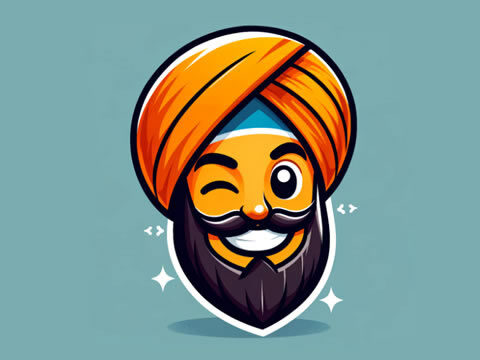ChatGPT is a type of AI model developed by OpenAI that can generate human-like text. It isn’t magic, and it isn’t sentient. It’s a tool that predicts the next word in a sentence, based on patterns it has seen in a massive amount of text data. GPT stands for Generative Pre-trained Transformer. It generates text, has been trained beforehand on a vast dataset, and is built on a transformer architecture, which is a specific kind of neural network designed for language understanding.
When you type into ChatGPT, you’re interacting with an advanced autocomplete system. But unlike your phone keyboard suggestions, ChatGPT has read books, articles, websites, and code repositories. It can write essays, summarise documents, or mimic particular tones and styles. Still, it doesn’t “know” anything in the human sense. It doesn’t have beliefs or intentions. It’s just very good at predicting the next plausible word.
The Evolution of GPT Models
GPT-1
Released in 2018, GPT-1 was the first iteration of this model. It had 117 million parameters and was a proof of concept. Its capabilities were limited, but it showed promise in understanding language patterns.
GPT-2
In 2019, GPT-2 scaled up dramatically to 1.5 billion parameters. Initially, OpenAI hesitated to release it, citing concerns it could be misused to generate misleading content. Eventually, it was made public and showcased strong text generation abilities.
GPT-3
Launched in 2020, GPT-3 was a leap forward, with 175 billion parameters. It became the backbone of many applications, including the early versions of ChatGPT. It could hold coherent conversations, generate creative content, and even write code snippets.
GPT-4 and GPT-4 Turbo
GPT-4 introduced major improvements in reasoning, coherence, and context length. It can process both text and images. GPT-4 Turbo, a variant designed for efficiency, provides faster responses and handles longer conversations with fewer errors. While OpenAI hasn’t confirmed the exact parameter count, it’s clear that GPT-4 models are significantly more capable and adaptable.
How ChatGPT Works
At its core, ChatGPT is trained to guess the next word in a sequence. Imagine reading half a sentence and trying to complete it. Now imagine doing that with the knowledge of billions of pages of text. That’s what ChatGPT does.
During its training, the model was fed huge amounts of text and adjusted its internal settings whenever it made an incorrect guess. Over time, it became more accurate. After pretraining, it underwent fine-tuning, including feedback from human reviewers who rated its responses for usefulness and safety. This process is called Reinforcement Learning from Human Feedback (RLHF).
Crucially, ChatGPT doesn’t have live access to the internet unless specifically connected. Its training data includes knowledge up to a certain cut-off point. It may make confident-sounding statements that are outdated or incorrect. Always verify important information.
Strengths and Limitations
ChatGPT excels at language tasks. It can summarise articles, brainstorm ideas, write poetry, draft emails, and even assist with coding. It’s also quick and usually coherent, making it a helpful assistant.
However, it has clear limitations. It can generate false information, known as hallucinations. It may misunderstand ambiguous prompts. It also lacks memory in most cases, though newer versions offer memory features where the model can recall facts from earlier conversations. This is gradually being rolled out.
Additionally, it lacks true reasoning ability. It doesn’t “think” through problems but follows statistical patterns. This means it may fail at tasks requiring genuine logic or multi-step deduction.
ChatGPT Product Tiers
ChatGPT is available in free and paid versions. The free version gives access to GPT-3.5, which is fast but sometimes less accurate. The paid version, ChatGPT Plus, unlocks GPT-4, which includes advanced features like:
- File uploads and code interpretation
- Image understanding
- Longer context handling
- Personalised memory
Subscribers get a more robust toolset, suitable for professional or academic use.
Getting Started With ChatGPT
Using ChatGPT is straightforward. You can access it via a web browser or mobile app. Once you’re in, you type a prompt and receive a response.
The quality of output depends heavily on how you phrase your prompt. Clear, specific instructions yield better results. For example, “Summarise this article in three bullet points” works better than “Summarise.”
You can also steer the tone, format, and content by including those instructions in your prompt. Experimentation is key.
ChatGPT vs Other Models
While ChatGPT is well-known, it isn’t the only language model. Others include:
- Claude by Anthropic: Focused on alignment and safety.
- Gemini by Google: Tightly integrated with Google’s ecosystem.
- LLaMA by Meta: Open-source, with growing community support.
OpenAI’s models remain popular due to their performance and ease of use. However, other models may be better suited to specific needs or environments.
Final Thoughts
ChatGPT is a powerful, flexible tool for anyone looking to work more efficiently with text. From casual users to professionals, it offers immediate utility. But it is important to understand both its potential and its limitations.
It doesn’t replace human judgment, creativity, or expertise. Instead, it augments them. The better you understand how it works, the more value you can extract from it.
